- Bernard Preston homepage
- Herbs Spices
- Make Homemade Gremolata With Garden Herbs
Make homemade gremolata with garden herbs
Make homemade gremolata with garden herbs to enrich and give more flavour to all your cooking; it's so quick and easy.
Gremolata is a condiment favoured in Italy; it's made with a green herb like parsley, lemon zest and garlic.
Herbs are in the main so easy to plant in pots at any sunny spot. Many of them grow like weeds; and I'm not exaggerating. There is really no reason to pay a fortune at the supermarket. And by turning parsley, basil and cilantro into condiments like gremolata and pesto they can be readily frozen in bags for enjoyment throughout the whole year.
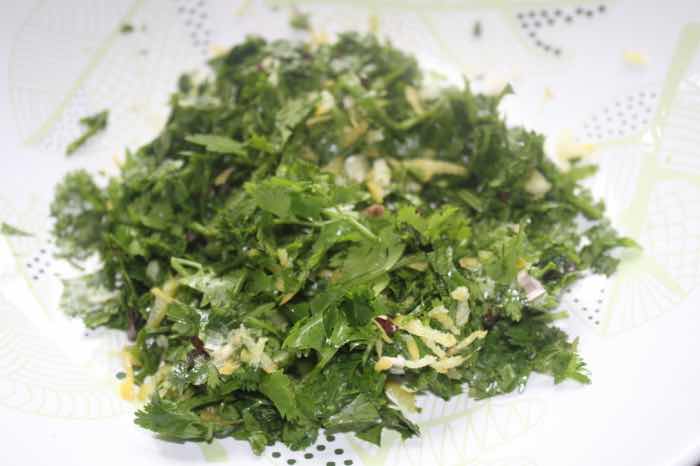
Garden herbs
This is a Cyan Zone site; blue issues for better health and green ones that concern caring for the planet. It's also about making time for growing simple things and there is little easier than garden herbs like thyme, marjoram and sweet basil; parsley is a tad more difficult.
 The colour cyan is a mixture of blue and green
The colour cyan is a mixture of blue and greenThe traditional Italian gremolata is made with parsley, lemon rind and garlic; but you can use any garden herb from your own green patch. And you can adapt the condiment in many different ways to suit your tastes and mood.
Parsley is certainly one of my favourite garden herbs; it's tragic that it is looked upon just as a garnish.
Today we are going to use cilantro, also known as green coriander simply because I have a glut in my garden; it too grows like a weed.
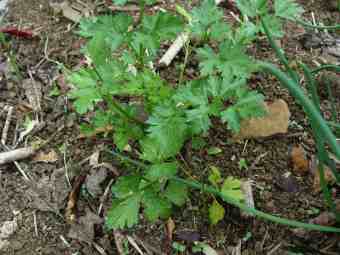
Ingredients
- A handful of fresh green cilantro
- The zest of a lemon or lime
- A few cloves of garlic
- A couple of rinsed capers
- Half a dozen lightly toasted almonds or walnuts
Go for it
- Pick and wash the cilantro thoroughly; include the stalks.
- Carefully peel the zest off a lemon avoiding the pith; or use a microplane.
- Top and tail the garlic.
- Toast the nuts lightly in olive oil.
- Rinse the capers.
- Using a heavy knife chop them all finely.
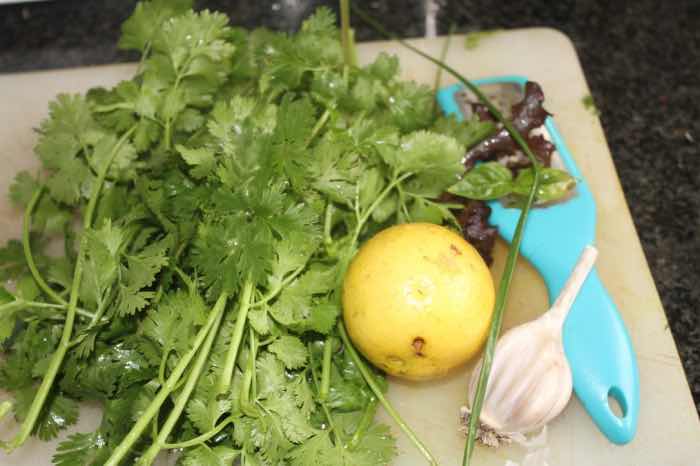 Gremolata ingredients: green herb, lemon zest and garlic
Gremolata ingredients: green herb, lemon zest and garlicMix all your ingredients together and hey presto you have your beautiful fresh gremolata. What could be easier?
I have deliberately included in the photo above a few leaves of a purple lettuce and some chives; personalise the gremolata to your own liking. We could have used parsley or added a sweet red pepper; or even a fiery chili.
Speaking of pesto it's almost as simple with the addition of nuts and a hard cheese; it too can be frozen for use all year round when you have a glut of sweet basil in your garden. Like most vegetables they soon wilt and lose half of their goodness when bought from the shops; easy and rewarding to grow.
Microplane
Keep it simple is our motto and there is nothing wrong with a sharp knife for getting your lemon zest. But I have to add a microplane is an inexpensive little kitchen utensil that I wouldn't be without.
Just use it mindfully as with all cooking; or you made find some of your skin planed into the gremolata.
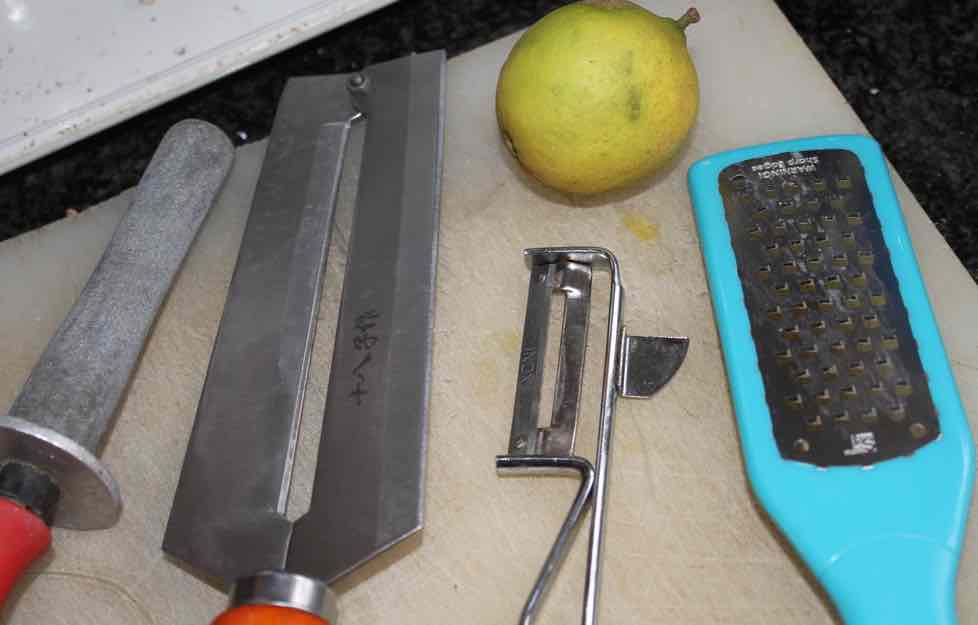 A microplane is a useful kitchen utensil.
A microplane is a useful kitchen utensil.Two heresies
1. Lemon juice
The first is to declare in total contradiction of all the maestros and epicures that we almost never use lemon juice in our food. And why is that?
Researchers have shown that more than half of the good stuff in citrus is to be found in the pulp; the vitamin C, lemonin and beta-cryptoxanthin for example.
Add to that the fiber; it's really quite difficult to get the recommended 35 grams per day that is recommended.
We have found that using the pulp hardly makes the slightest difference to the appearance or taste of your gremolata; if anything it further enhances all the reasons that good cooks use fresh lemon juice so effusively. More importantly it doubles its proven effectiveness in preventing Alzheimer's Disease and a host of other conditions.
2. Don't bother with peeling the garlic
I stopped to consider recently why I was so reluctant to use garlic, one of my favourite herbs. I realised that it was because peeling was such a chore; so now I don't bother and not a single person has noticed.
It's probably fake news but rumour has it that in China garlic is grown in human faeces. I only use that from a known source.
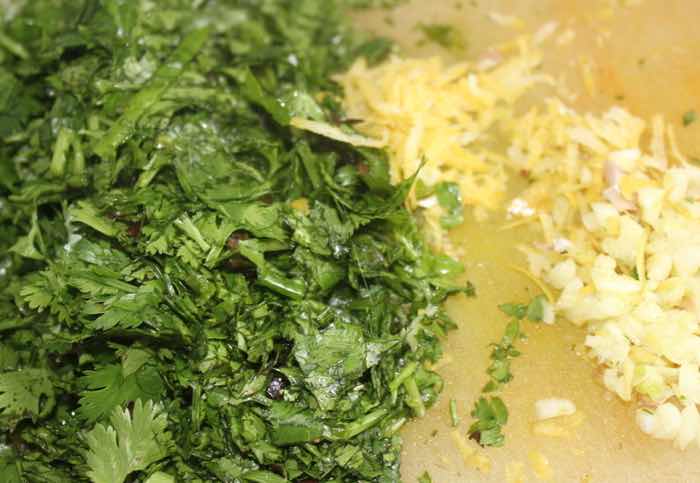 Green herb, lemon zest and garlic.
Green herb, lemon zest and garlic.Many coloured foods
There is strong research that those enjoying many coloured foods on a daily basis have a 33% lower all-cause of death. That's massive and reason enough for being more adventurous in the kitchen. In any case condiments like this gremolata taste so good and will enhance almost any dish.
Phytonutrients like folate, limonin and the allicin in garlic are more readily absorbed in the presence of fats; so we often will take our homemade gremolata a step further.
Gremolata in olive oil
It makes good sense to routinely preserve your homemade gremolata with garden herbs in olive oil; and whilst you are about it since it goes so well with a salad, slice in half a chopped lemon or lime. Add a teaspoon of natural honey if you have a sweet tooth.
The good wife likes to spoon it over her potato salad, beef stroganoff or pork eisbein.
It's all about adding more coloured foods to your meals; and making them zestful and interesting.
Caring for the mortal frame
Most of us clearly think we are going to live happily ever after into our nineties, with no attention to detail; and then are indignant when we get an aneurism in the brain or prostate cancer.
Personally like St Francis of Assisi I find that Brother Ass is a very stubborn rogue; and needs to be chastised regularly should he turn up his nose at garden herbs. In the practice it is all to evident that he turns around and bites us if we feed him on craparola or neglect to take him out for exercise.
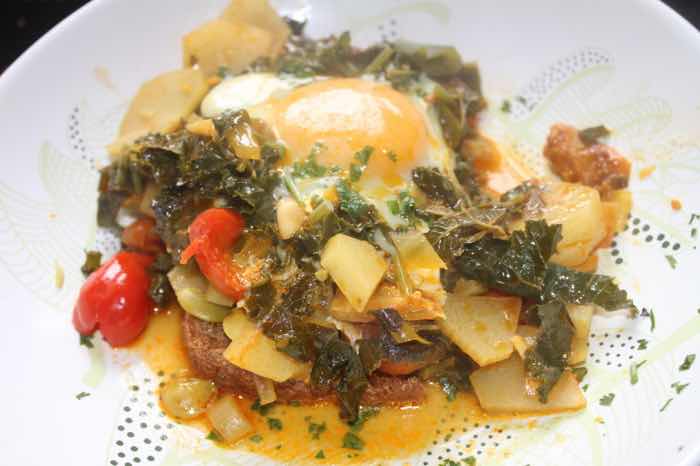 Homemade gremolata sprinkled on Eggs Hilton.
Homemade gremolata sprinkled on Eggs Hilton.Eggs Hilton is one of our favourite breakfasts; it is basically a sort of shakshuka with whatever is growing in the garden. Today it's baby kale and spinach leaves; with peppadews, garlic and chaote squash. Often there would be half a dozen broad or lima beans in season; or green peas.
I've sprinkled a little homemade gremolata on our breakfast this morning; it's not to be seen but it gives a delightful citrusy flavour.
Keep it simple is our motto. No fast food ever tasted as fine as this; with none of the flavour enhancers needed to dicky up processed meals from which much of the goodness has been extracted.
Blue zone longevity
We are doing our level best to imitate the lifestyle of those folk in the Blue Zones of the world; there are only five of them. Ten times as many people live to strong and zestful nineties. One in a thousand reach their century; it's amazing. Garden herbs and many greens should be the normal for those looking for long and healthy lives.
We credit the lifestyle of these interesting people that neither of us in our mid-seventies are taking any medication; well, I did have an ear infection after a foolishness about three months ago.
And my blood-pressure last week when I went for an annual checkup was 122/83. It doesn't get better than that.
We have enough energy to go at life, hammer and tongs every day. This morning it was the chainsaw on a heavy trunk that came down in the garden; firewood for the next year.
Make homemade gremolata with garden herbs; it is just one of hundreds of interests. Tomorrow I'll be robbing the bees; oops, harvesting the honey. Would a rose smell any different if we gave it another name?
In truth there is a symbiotic relationship between the bee and her keepers. We give her a nice warm, dry home and in a dearth when she's hungry we feed her; when she stores up a big surplus during a bumper season, we enjoy natural honeycomb.
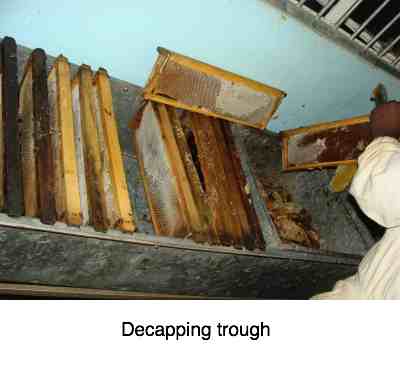
Usefulness
A long and zestful life does not come about by chance; it's for those who work at it. Learning how to make homemade gremolata with garden herbs is just one tiny part of the equation.
Plenty of greens, lemons and garlic are found routinely in the food those long-living people enjoy. I hope you have found this page useful.
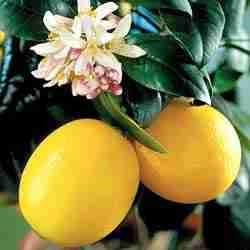 Lemons are central to homemade gremolata
Lemons are central to homemade gremolataDoes gremolata contain nuts?
A traditional gremolata of parsley, lemon rind and garlic is just the start for your own creativity. Try adding lightly toasted nuts, a different green herb and even a few capers; the sky's the limit.
Sprinkle the gremolata over Eggs Florentine, any chicken dish and if you like it spicy add a finely chopped peppadew.
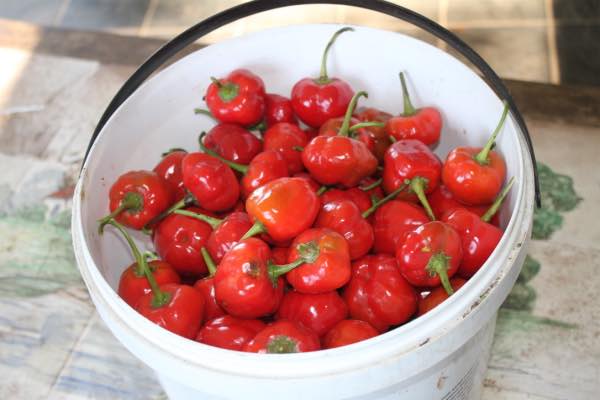
Make homemade gremolata with garden herbs
Make homemade gremolata with garden herbs when you have a glut of parsley, cilantro or sweet basil.
- Blue Zones @ BBC
When browsing use right click and "Open Link in New Tab" or you may get a bad gateway signal.
Newsletter
Our newsletter is entitled "create a cyan zone" at your home, preserving both yourself and Mother Earth for future generations; and the family too, of course. We promise not to spam you with daily emails promoting various products. You may get an occasional nudge to buy one of my books.
Here are the back issues.
- Lifestyle and ideal body weight
- What are ultra-processed foods?
- Investing in long-term health
- Diseases from plastic exposure
- Intensive lifestyle management for obesity has limited value
- A world largely devoid of Parkinson's Disease
- The impact of friendly bacteria in the tum on the prevention of cancer
- There's a hole in the bucket
- Everyone is talking about weight loss drugs
- Pull the sweet tooth
- If you suffer from heartburn plant a susu
- Refined maize meal and stunting
- Should agriculture and industry get priority for water and electricity?
- Nature is calling
- Mill your own flour
- Bake your own sourdough bread
- Microplastics from our water
- Alternative types of water storage
- Wear your clothes out
- Comfort foods
- Create a bee-friendly environment
- Go to bed slightly hungry
- Keep bees
- Blue zone folk are religious
- Reduce plastic waste
- Family is important
- What can go in compost?
- Grow broad beans for longevity
- Harvest and store sunshine
- Blue zone exercise
- Harvest and store your rainwater
- Create a cyan zone at your home
Did you find this page interesting? How about forwarding it to a friendly book or food junkie? Better still, a social media tick would help.
- Bernard Preston homepage
- Herbs Spices
- Make Homemade Gremolata With Garden Herbs
Address:
56 Groenekloof Rd,
Hilton, KZN
South Africa
Website:
https://www.bernard-preston.com